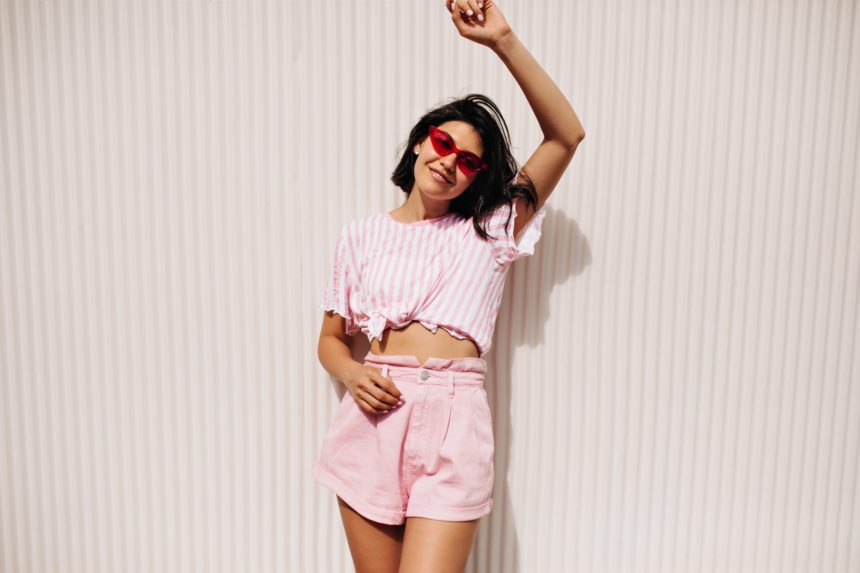Complete Guide on How to Correctly Combine Different Textures in the Same Outfit for a Wow Effect
Fashion is an art form that allows individuals to express their personality and creativity. One of the most effective ways to elevate an outfit is by combining different textures. Mixing textures can add depth, interest, and a unique flair to your look. However, it requires a keen eye and a bit of practice to master. This guide will provide you with essential tips and insights on how to combine textures effectively for a stunning visual impact.
Understanding Textures
Before diving into the art of mixing textures, it’s crucial to understand what textures are. Textures refer to the surface quality of a fabric, which can be perceived visually and tactually. They can be categorized into three main types:
- Natural Textures: Fabrics like cotton, linen, and wool that have a more organic feel.
- Synthetic Textures: Materials such as polyester, nylon, and spandex that often have a smoother finish.
- Mixed Textures: Fabrics that combine different materials, like denim with leather or lace with silk.
Each texture brings its own character to an outfit, and understanding these differences is the first step in creating a harmonious look.
Choosing a Color Palette
When combining textures, the color palette plays a vital role. A cohesive color scheme can unify different textures and create a balanced outfit. Here are some tips for selecting your colors:
- Monochromatic Schemes: Using different shades of the same color can create a sophisticated look while allowing textures to stand out.
- Analogous Colors: Colors that are next to each other on the color wheel (like blue and green) can create a harmonious effect.
- Contrasting Colors: For a bold statement, choose colors that are opposite on the color wheel (like red and green) to make textures pop.
By carefully selecting your color palette, you can enhance the visual impact of your textured outfit.
Balancing Textures
One of the key principles of mixing textures is balance. Too many competing textures can create visual chaos, while too few can make an outfit look flat. Here are some strategies to achieve balance:
- Pair Heavy with Light: Combine heavier textures like wool or leather with lighter ones like chiffon or cotton to create contrast.
- Vary the Scale: Mix large, chunky textures (like cable knit) with finer textures (like silk) to create visual interest.
- Limit the Number of Textures: Aim for two to three different textures in one outfit to maintain focus and coherence.
By balancing textures, you can create an outfit that feels intentional and stylish.
Examples of Successful Texture Combinations
To illustrate the principles of mixing textures, let’s look at some successful combinations:
- Denim and Lace: A classic pairing that juxtaposes the ruggedness of denim with the delicacy of lace, perfect for a casual yet chic look.
- Leather and Silk: The edginess of leather complements the softness of silk, creating a sophisticated evening outfit.
- Wool and Cotton: A cozy winter look can be achieved by layering a chunky wool sweater over a crisp cotton shirt.
These combinations not only look great but also showcase the versatility of different textures.
Case Studies: Fashion Icons Who Mastered Texture Mixing
Many fashion icons have successfully mastered the art of mixing textures. For instance:
- Rihanna: Known for her bold fashion choices, Rihanna often combines unexpected textures, such as pairing a sequined top with distressed jeans.
- Kate Moss: A style icon, Kate frequently mixes leather jackets with soft, flowing dresses, creating a perfect balance of tough and feminine.
- Pharrell Williams: His eclectic style often features a mix of textures, from tailored suits with knitwear to casual streetwear with luxurious fabrics.
These icons demonstrate that mixing textures can lead to standout fashion moments.
Conclusion
Combining different textures in an outfit can create a stunning visual effect that showcases your personal style. By understanding textures, choosing a cohesive color palette, balancing different materials, and learning from fashion icons, you can elevate your wardrobe to new heights. Remember to experiment and have fun with your outfits—after all, fashion is about self-expression. With these tips in mind, you’re well on your way to mastering the art of texture mixing for a wow effect!
